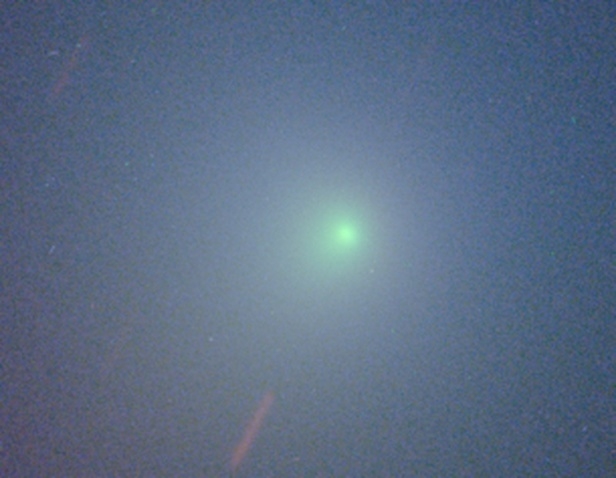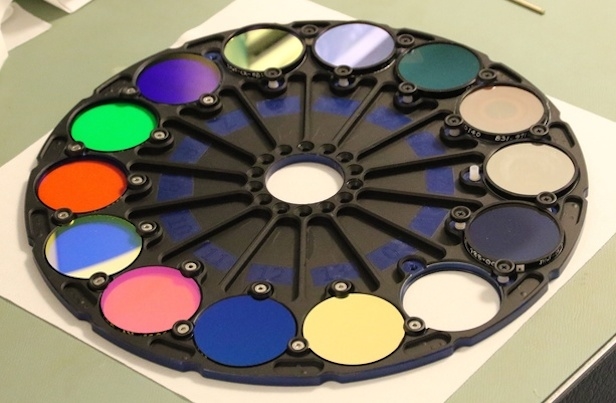Californian observatory to ‘get up close’ to comet Wirtanen
With data, astronomers will put together a more complete picture of the comet and what drives its activity

Comet 46P/Wirtanen as viewed with the Faulkes Telescope North, Las Cumbres Observatory at Maui, Hawaii, on 9 December 2018. Image credit: T. Lister / C. Snodgrass / Las Cumbres Observatory / Faulkes Telescope Project
A special visitor is crossing the sky this December: comet 46P/Wirtanen, sighted with telescopes and binoculars in recent weeks, is on the way to its closest approach to Earth this weekend, when it might become visible to the naked eye.
“Comet 46P/Wirtanen has been a popular proposed target comet for several spacecraft missions. This has resulted in intensive observation campaigns from the ground to prepare for the potential missions,” says Dr. Tim Lister, Staff Scientist at Las Cumbres Observatory (LCO).
“The close approach of comet 46P/Wirtanen to Earth in December 2018 allows us to get really detailed observations of the comet as a whole and compare it to spacecraft data. This includes the coma and tails that stretch over millions of miles,” adds Lister.
Comet 46P reached perihelion, the closest point to the Sun along its orbit, on Wednesday 12 December, and will appear at its brightest to observers on Earth in coming days as it keeps moving towards our planet. It will reach the closest point on Sunday 16 December, when the comet will be just 30 times farther away than the Moon.
Because comet 46P is passing so close to us, it is very bright and will allow astronomers to observe it with a wide range of telescopes. With these data, they will put together a more complete picture of the comet and what drives its activity.

This image shows the filterwheel of the CometCam instrument being assembled in the clean room at the headquarters of Las Cumbres Observatory in Goleta, California. Image credit: Tim Lister (LCO)
Las Cumbres Observatory is contributing to this effort using a new instrument that was quickly assembled in the LCO headquarters in Goleta and shipped out to and installed on LCO’s 2-metre telescope on Maui. This instrument contains a camera and a number of specialised filters, provided by the European Space Agency, which are tuned to the specific gases emitted by comets. “It was a heroic effort by the staff and engineers at LCO to get this instrument built and ready in such a short time for this historic opportunity. These special filters are great to observe a bright comet like 46P, enabling us to separate the gas and dust content of the coma,” says Lister.
Las Cumbres Observatory and its network of robotic telescopes across the world have participated in the past in coordinated, worldwide, ground-based campaigns to observe comets. That network is now involved in a global project to observe comet 46P. Ground-based observations are useful to assist data obtained from other telescopes in revealing the behavior of the comet.
Astronomers are using the telescopes of Las Cumbres Observatory to study 46P and other comets. Dennis Bodewits of Auburn University and Matthew Knight of the University of Maryland are using LCO telescopes to determine the rotation period of the nucleus of comet 46P. They are also using the rapid response capability of LCO to get observations very quickly if a comet goes into outburst.
“There are now a large number of surveys, such as the Zwicky Transient Facility, that are monitoring parts of the sky every night. These surveys can provide alerts if one of the comets changes brightness suddenly and then we can trigger the robotic telescopes of LCO to get us more detailed data and a longer look at the changing comet while the survey moves onto other areas of the sky,” explains Lister. “The robotic telescopes and sophisticated software of LCO allows us to get images of a new event within 15 minutes of an alert. This lets us really study these outbursts as they evolve.”
Keep up to date with the latest news in All About Space – available every month for just £4.99. Alternatively you can make the most of our Christmas offer and subscribe here for a fraction of the price!





